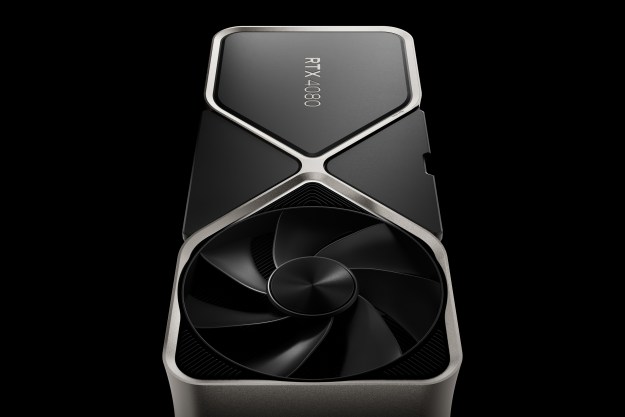While all cryptocurrencies are a little different from one another, Ripple stands apart with its backing by major banks. That’s lead to some exciting partnerships, which in turn helped boost Ripple and its transactional protocol, XRP, to become one of the largest cryptocurrencies by market share in early 2018.
Cryptocurrency know-how
- What is cryptocurrency?
- The best Bitcoin alternatives
- Blockchain: Beyond Bitcoin
- Inside a Bitcoin mine
Step 1: Pick a secure Ripple wallet
Although most exchanges for cryptocurrencies will let you store your newly acquired digital currencies with them, that’s not an ideal place to leave it. Just like with Bitcoin, picking a secure wallet is an essential step in your Ripple-buying journey.
This wallet is where you’re going to store your XRP after purchase, so you aren’t susceptible to exchange outages, hacks, or thefts. While there aren’t quite as many viable XRP wallets as there are Bitcoin wallets, there are some great ones that we can recommend.
Toast Wallet: This freely available Ripple wallet is compatible with Android, iOS, Windows, Mac, and Linux operating systems and offers reliable security with robust backup options. It’s software-based, so you are somewhat reliant on the protection level of your device, but it’s more convenient than a hardware wallet and free too. As such, you might want to consider using a VPN for added privacy and defense.
Ledger Nanos: If you take your Ripple security seriously or plan to buy a lot of it, then a hardware wallet is a great way to secure your new purchase. At around $100, it’s much cheaper than its touchscreen alternative, the Ledger Blue. It is a little more complicated to set up than a software solution, but it’s about the safest you can make your cryptocurrency without springing for a safety deposit box too.
Step 2: Sign up to an exchange

There are many different exchanges out there, and a good number of them accept trades in XRP but not all of them are reputable. You can find several sanctioned exchanges on the RippleLabs website, but for this guide, we’ll be using the long-standing Kraken.
First, sign up for an account on Kraken and select a secure password (save it in a password manager). Then, activate your account via your email and login. Once you’re on your account page, navigate to the verification tab and follow the on-screen instructions.
You’ll need to verify your account to at least Tier 3 to deposit fiat currency funds like USD so that you can make a trade. For Tier 3, you’ll need to provide a proof of address, which can take 1-5 days to verify. Other countries may not require such steep verification.
Once verified, click your account name in the top-right and select Deposit from the drop-down menu. Select your local currency from the left-hand menu followed by your transfer preference from the drop-down menu. Follow the on-screen instructions to send your fiat currency to your Kraken account. Note that transfer times can take up to five days in some cases, though in most will be complete within one or two.
Step 3: Make the trade
When your account is primed and ready, click on the trade tab and select New order. Select the currency you want to buy and the one you want to use to make the purchase and input how much you want to buy or spend. Take note of the market rates and when you’re happy with your intended purchase, hit the green Buy XRP with the button.
Doing so will make a market trade at the best available rate. If you would rather, you can place a limit order, which only makes a trade at a specified price or better. If all goes to plan, your XRP will then transfer to your Kraken wallet.
Step 4: Move it somewhere safe

Once you have your XRP, you want to avoid problems like the exchange going down or getting hacked. It’s time to move your newly acquired Ripple to your previously prepared wallet. Whether it’s a software or hardware wallet, you should have complete control over your new cryptocurrency.
To do so, click your account name in the top right-hand corner and select Withdraw. Then choose XRP from the list of currencies on the left-hand menu. On the next page, follow the on-screen instructions to add the address of your off-exchange wallet. Save it, select it from the drop-down menu, then choose how much of your XRP you want to transfer away.
When ready, click the green Confirm withdrawal button. Details of the transaction should then appear on the withdrawal page, letting you know the state of transfer. It may not happen immediately but shouldn’t take more than a few hours to appear on your off-exchange wallet.
‘Buying’ with other currencies
The above methods are the only current ways to buy XRP with your real-world money. If you already have cryptocurrencies like Ether or bitcoin, you can use asset exchange sites to trade one for another quite swiftly.
For a full breakdown of the methods involved in that, check out our guide on how to trade cryptocurrencies. If you need a quick recommendation, services like ShapeShift and Changelly are decent options and are even incorporated directly in specific wallets. Paxful also has some direct trade asset exchanges with XRP, though that depends very much on the sellers.
Editors' Recommendations
- Dell XPS 14 or XPS 16? Here’s how to know which to buy
- Here’s how to choose the right printer to buy in 2024
- SSD buying guide: how to pick the right SSD for your needs in 2023
- Ransomware attacks have spiked massively. Here’s how to stay safe
- MacBook Pro M2 Pro/M2 Max buying guide: how to make the right choice




